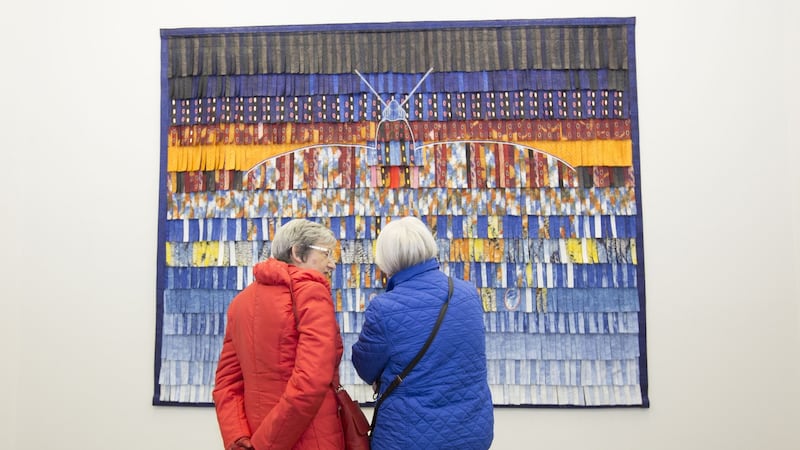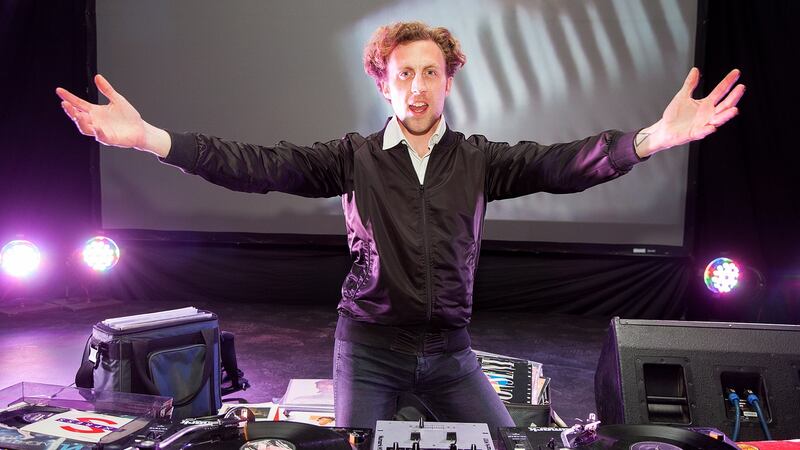Eva International, Ireland’s biennial exhibition of contemporary art, is based in Limerick. The curator of next year’s exhibition, Colombian-born Inti Guerrero, recently visited Ireland. He will be back several times in the lead-up to the exhibition, then for a prolonged period as the start date looms. Already he has scouted Limerick and Dublin, talking to interested parties and visiting studios, and he plans to travel farther afield in Ireland.
Eva 2016, Still (the) Barbarians, curated by Koyo Kouoh, featured 57 artists and drew more than 100,000 visitors. Eva was established in 1977and occupies multiple venues in Limerick city. It comprises works by artists selected from open submission and works by invited artists. The curator decides on the theme and which artists to invite. Guerrero, who is very energetic and has a genuinely global perspective, has settled on “the current state” as an initial theme.
He elaborates with a ready smile: “What is the current state? It’s just a question in general, a catalyst. It was up to artists to interpret it in whatever way they like. It could be the state of the world, or it could be nothing ideological or political at all, like the state of their own practice, the state of anything that concerns them, whether that is global politics or something right outside their own front door. Really, I wanted to keep it as open as possible. And ‘the current state’ will not be the title of the exhibition. I don’t know what the title will be yet.
“It’s important that the thematics of the exhibition arise from the entry. There shouldn’t be one single filter. The essence of Eva is that it is a democratic platform. For me, the project is like a research tool. I’d hope that the audience get to see things they have not seen before and would not otherwise see.”

Having worked through a significant amount of the entry – applications closed at the end of January – he’s confident that there will be ample material to realise his vision of creating a community of “intertwining group shows” rather than “a monolithic thematic exhibition”.
Guerrero was born in Bogotá, Colombia, in 1983. He studied art and architectural history and theory in Colombia and in São Paulo, Brazil, before completing the curatorial programme at De Appel in Amsterdam. He has worked as a curator in Costa Rica as well as curating exhibitions for a large number of international venues, and is currently Estrellita B Brodsky adjunct curator of Latin American Art in Tate, London. He is based in Hong Kong.

Art fair dominance
He believes biennials represent particular opportunities. He points to the current dominance of art fairs in the art world. “We are in the era of the art fair. It is as though art fairs have hijacked the system. They are like an embedded machine for the production of new work.” The result is that arts audiences rarely look back. Art fairs and biennials are the two main collective events in the international art calendar. But, he argues, as opposed to the “who’s who now?” snapshot of the fairs, biennials have greater possibilities and responsibilities, specifically a chance to try and answer the question of where we are now, historically.
A biennial, he says, can be “a temporal museum”. He is adamant that current art should be seen in the context of its history. His work for Tate involves a great deal of research into the evolution of Latin American art through modernity. Judging by his description of the process, he has learned to appreciate that the official version rarely reflects the complex reality, and that artistic production is always open to reinterpretation and re-evaluation. In terms of Eva and Ireland: “It should not only be about now, but also a means of revisiting certain art historical narratives relevant to Ireland. A biennial offers a chance to reframe, to see things another way.”

He is also determined that this should include the past as well as the present. For the moment he is keeping his own counsel as to how that will play out in Eva 2018 but, he says, he has some specific ideas.
Guerrero is struck by the topsy-turvy nature of “our global moment”. Globalisation, inextricably linked to neoliberalism, was seen as a great evil. That seemed clear enough even quite recently, with the beginning of the Occupy Movement. Now, history has lurched in a different, unexpected direction. “That mood of global scepticism” engendered a shift in attitude, but in perhaps the worst possible way: “The current wave of nationalism. I think even critics of neoliberalism would concede that globalisation has to be in many respects better than the current resurgence of nationalism.”

Even the apparent evil of art fairs, as a manifestation of a globalised market, is not so clear-cut. In 1997, Guerrero points out, sovereignty over Hong Kong passed from Britain to China. Artistic discourse in Hong Kong became politicised around the issue of China, for better or worse – mostly, he feels, the latter. The contemporary art market in China is effectively a Chinese monopoly. The arrival of Art Basel Hong Kong, he reckons, “changed the ecology in a good way. It became a bigger arts community, a different one.” Art Basel broadened the artistic discussion.
Both Hong Kong and Ireland were colonised by Britain. “Ireland was the closest and first, Hong Kong the furthest and last. The nature of colonialism is that it creates a new reality in a foreign place.”
It seems to me that Ireland is in an exceptional position to counter a great deal of the current anti-immigration rhetoric."
In practice, the indigenous culture is variously supplanted, patronised, ridiculed, diminished, repressed, eclipsed, replaced. Instead of the colonial model, or on the other hand a retreat into insular, nationalist identities, surely it’s better to recognise plurality, difference and divergence? Art fairs can contribute to that process, biennials more so, Guerrero believes.
Referring to Irish history and the Irish diaspora, he notes: “As an outsider here, it seems to me that Ireland is in an exceptional position to counter a great deal of the current anti-immigration rhetoric.”
The country is also enmeshed in “the current state”: “There’s a Trump hotel in Doonbeg”, he says, not to mention such issues as corporate tax rates, Irish emigrants and Brexit, which has had the effect of restoring the status of Northern Ireland to the centre of current debate. As a curator, he feels, “A responsibility to the site [that is, Ireland], not only currently, but in terms of memory and history.”
A collage and an essay
Why did he become a curator? Part of his initial studies included “a curatorial strand. The proposition was that we think of an exhibition as a medium.” That gripped him immediately and set his mind working on another track. It was an intriguing way “of looking at the major shows, like documenta [a contemporary art show that takes place every five years in Germany] or the Venice Biennale”.

If the exhibition was a medium, he asked himself, “What was the nearest medium to an exhibition?” He pauses before answering: “Collage. Because both exhibitions and collages are made of parts of other things but, drawn together, each creates its own new narrative.”
Equally instructive, for him, was the way they diverge. “An exhibition is not just a retinal experience. Exhibitions are distributed in space, we experience them spatially. So I began to think, an exhibition is like an essay, one written throughout a space, unfolding like a scroll.” He is currently developing the scroll that will be Eva. As opposed to a snapshot, it will be a collection of interconnecting group shows proposing a number of complementary narratives.
Eva International takes place in Limerick, April 14-July 8, 2018. eva.ie











